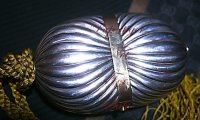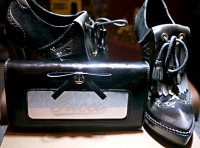Driving in Israel
I found the idiosyncrasies of Israeli driving to be very interesting and wanted to share the things that entertained me. After I wrote this, I thought “way too many words and bad pictures.” You, the reader, can pare this down by scanning the topic headings in bold and only read the ones that interest you. You can save it for when you are really bored and have absolutely nothing else to do. Or you can use it as a sleeping aid.
In advance, I want to apologize for the quality of the pictures. As I am the driver, it was difficult to take pictures when I wanted because the image either flew by, or I was up to my arse in traffic, or I was trying to not get hit by someone passing. Also, the pictures don’t really illustrate how crowded the roads are because many of the road pictures were taken on a Friday, which is the Sabbath, so most people are home that day.
In the planning phase of our vacation, I read that Israeli drivers were very aggressive. I lived in Los Angeles for 7 years, and I figured they could not be worse than Angelinos. Renting a car was the only way to get to the places we wanted to visit, so we did. The first few days were white knuckle, but it got easier.
We picked up our rental car and it turned out to be a great car. It was a hybrid Toyota Corolla. It had signs on both sides and the rear indicating that it was a Budget Rental car. I figure that is the universal sign in Hebrew
“clueless idiot behind the wheel.” I liked that. I figured I would need all the help I could get. I loved having WAZE on the dash as a nav system. It was a bit of a problem that she only spoke Hebrew. It also took us a few days to understand the icons, but the arrows were the bomb. Having a good car made the following challenges less difficult.

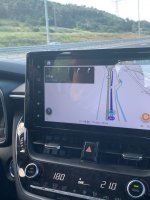 What is the speed limit and how fast I should drive?
What is the speed limit and how fast I should drive? Israel is very stingy when it comes to posting speed limit signs. The other cars provide no clue. Somehow, I got it in my head that the speed limit was 80 kilometers per hour, and everyone on the road was passing me on the two lane road. I guessed that everyone else was going 90…100….110. I got out of their way the best I could. I didn’t want a speeding ticket. I finally read in a traveler’s blog that everyone was, in fact, going 10 to 30 kilometers over the speed limit. After that I sped up.
It helped when I learned to convert from kilometers to miles per hour. If you are a miles-per-hour driver, you think you are flying when you are creeping. I thought 80 kph felt like a reasonable speed, only to learn that I was going 50 mph. After that, my happy place was a 90 kph speed limit, with me driving 110 kph. To Americans, that sounds crazy fast, but it is only 68 mph.
After you get the hang of driving at the same over-the-limit speed everyone else does, you start wanting to pass the slower moving trucks. Passing pumps up your adrenalin and makes driving in the desert infinitely less boring. Passing fights sleepiness.
The highways in the West Bank are for Israelis only. No Palestinians allowed. Seriously, the road is controlled by Israel and the land on either side of the road is controlled by the Palestinian Authority. I have no idea how Palestinians cross the road.
This is one of the rare 4 lane roads outside of Jerusalem photographed on the first day of Passover so we had it all to ourselves.
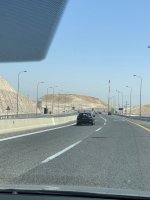
Closer to Jerusalem is the wall separating the West Bank and the City. That is the infamous wall on the right. This picture was taken from a taxi that we had take us on a tour of Ramalah. The Israelis own the road and the Palestinians own the land on each side.
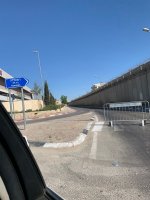 Israel should be called the country of round-abouts.
Israel should be called the country of round-abouts. The first town we went through on the way to the Bedouin camp was at the intersection of a small road and a smaller road. When you see something like that on a map in the US, it means there is going to be one stop light, a gas station, a grocery store, and 600 people. This Israeli town was bigger than 600 people. To get from one side of town to the other, we had to go through 12 traffic circles. Those 12 traffic circles did not have a single sign identifying the street names or highway number. Shouldn’t there be signs to guide you on how to stay on the same highway you are on? You have to know where you are going before you can go there. Without WAZE, we would have been toast.
Initially we thought it was just a quirk of that town. As we ventured forth on the next day, we realized “hey there are really a lot of round abouts here”. I am not exaggerating when I claim that in 4 days, we went through 400 round abouts. You would think after going through 400 roundabouts, I would have a picture of at least one, but I don't because my eyes were glued to WAZE trying to figure which road to take out of the circle. Our Hebrew speaking WAZE, taught us the only Hebrew word we learned on our vacation. It sounds like SHEK-LA-SHEY. That is Hebrew for “traffic circle”. Sometimes WAZE was SHEK-LA-SHEY-ing us so frequently, it sounded like a chant. Israeli roads don’t have a lot of traffic lights and stops signs are practically an endangered species. I saw only 5 stop signs in 4 days of driving.
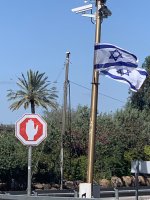 Israelis don’t go through traffic lights on pink.
Israelis don’t go through traffic lights on pink. Israelis do have traffic lights in the crowded parts of major cities. In the US, when a light turns yellow, people speed up so that the two people behind them can go through on red. In Israel, yellow lights are short and people actually stop immediately. But…Israelis have another yellow light that we don’t. When the light is going to turn green, there is a yellow light that means “get ready.” Israelis start through the intersection on that yellow!!! What??? It is like jumping out of a chute with a firing pistol. This is cheating on the FRONT end of green, whereas we cheat on the BACK end of green.
The Israeli highway rest stop is a design cluster fork. In the US, rest stop means a mini park on the interstate to go to the bathroom and to walk your dog. In Israel, it is a combination gas station, mini mart, café, bathrooms, and sidewalk vendors which is found on major roads. You take the exit off the highway to the rest stop, which is the only thing on that exit. The exits look like ours, but what is at the end of the ramp is very different. Every car is forced to drive through the gasoline area first. There are about 5 angled gas bays and there is angled parking and a sidewalk vendor on either side of the gas bay area. Cars are all askew as they are waiting for a pump or a parking space. To the uninitiated like us, it looks like pure chaos. You weave your way through pumps and waiting cars and reach another line of cars trying to get one of the parking spaces in front of the café & bathrooms. You buy something and do your business and then navigate at least two traffic circles to get out of the rest stop and back on the highway again. It is just flat out weird to have to go through a traffic circle to get out of a gas station complex.
As you look at all these cars, keep in mind they were all on the road with us a few minutes before. This is the kind of traffic I have been trying to tell you about.
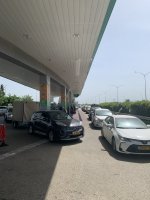
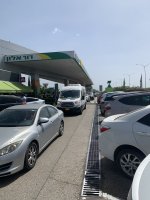
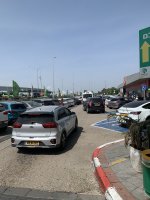 Being unable to order food is a great diet.
Being unable to order food is a great diet. In our first rest stop experience, we had to have help making the gas pump work (we never figured out how to make the pumps work anywhere). We were lucky in getting a parking space, and we tried to buy food. The food is far superior to American gas station food, but we were too overwhelmed with the process to order.
There is a long counter with pizza and sandwiches and food that is unidentifiable to us. There are people who collect money and prepare the food. On the outside of the counter, there are frigs with drinks and ice cream. I wanted to get a drink and ice cream so that I would not have to use the electronic ordering system, given how poorly we fared making the gas pump work. I took my items to the cashier who would not take my money because…….wait for it……. I had not ordered them the through the electronic system. I had an involuntary moment of eye rolling. I have to admit, the idea of shoplifting flashed through my mind.
They sent someone out to help us order the things in our hands on the electronic menu, so we could pay for them. Everyone in Israel speaks English, except for the woman they sent to help us. She set the ordering machine on an English setting and entered our order even though she could not speak English. It was ludicrous that now we could read the words and she couldn’t, but she was doing the entry. We made it through, and then collapsed into despair, when we said we wanted to pay with credit card and she pressed cash (which we could read and she couldn’t).
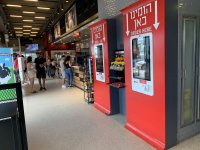 The Israeli super power is passing.
The Israeli super power is passing. IMHO, the Israeli road system is under-developed. With the exception of Tel Aviv, in every place we were there were way too many cars for the number of lanes. The only reason Tel Aviv is not over-populated with cars is because it is over-populated with razor scooters and motorcycles. Tel Aviv is a walking city so not so many cars but the razor scooters, and motorcycles, and bicycles are everywhere. This, btw, is one of the main shopping and strolling streets. Rothchild Blvd is supposed to be like 5th Ave. NY.
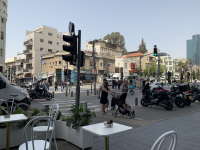
Back to the passing topic. One person told us the road infrastructure is under-developed is because such a high portion of the Israeli national budget goes to defense. Most of the roads are two lanes. There are some limited stretches of 4 and 6 lane roads on the outskirts of Jerusalem, Tel Aviv, and Haifa and they have speed limits of 120 kph. Except they are prone of traffic jams that slow things to 7 kph. How can a country that is this advanced and clever have a system of mostly two lane roads?
Like all two lane roads worldwide, there are stripes marking passing and no passing zones. In the US, the passing zones are stretches of road in which you can see on-coming cars. In Israel, they have passing zones with blind curves or blind hills. This was especially true in the Golan Heights which had a lot of hills and curves. I just kept repeating to DH every time we came to a blind passing zone “can you believe this?” I finally concluded the only explanation is Israelis have X-ray vision.
It seems like all Israelis go one direction at one time. Traffic seemed heavy to me going up to Mt. Bental in the Golan Heights. The Golan Heights is a lightly populated area with a lot of small roads, so it should not be busy. When we came down the mountain, traffic was pretty light going our direction, but we counted 70 on-coming cars without a break going up the mountain. Would that not be maddening to be stuck in? We had the same experience going north to Haifa—huge traffic jams going to Haifa and smooth sailing going back to Tel Aviv. This is not like our morning and evening rush hours where traffic all goes one way. This happens all day. I don’t get it.
Since Israelis spend so much time in one way traffic jams, they become fiendish passers. I believe that I was a road hazard, because my habit as a defensive driver is to leave a lot of space in front of me. That big fat space was an irresistible lure to the impatient, frustrated Israeli driver who spends a lot of time on inadequate roads with too many other drivers. It didn’t matter that I was in the fast lane and was driving the exact same speed as everyone else, people would spot that gap in front of me and pass me on the right to get it. They swerve into right lane and then cut back left to get to their destination 20 feet ahead of me.
Passing Israeli style is a team sport. 1. The passing car gets only the front half of their car ahead of the being-passed car. 2. Then the passing car cuts back in. The back half of the passing car is EVEN with the front half of the being-passed car and obviously the two cars can’t occupy the same space in the same lane. 3. If you are the one being passed, It is your job to not hit the back half of the passer’s car, so you either hit the brakes or swerve toward the berm. The first couple of times it happens, you go "holy cow" and clinch the steering wheel, but after a while, you come to expect it. I could see in the rear view mirror what was coming, so I would warn DH "close call coming" (especially with the passing on the right) so he would not be totally freaked out.
In spite of all the things about Israeli driving that seem crazy and scary to me, I did not see a single car wreck in five days on the road. Not one. At home I see at least one accident every single day in the 5 mile drive from our house to our business. I don't understand the absence of accidents in Israel. The only explanation is that this is the Holy Land and they are God’s chosen people.






 It's an update to my earlier post, nothing more. I don't want to derail the thread again! I will forever be grateful for your continual support and I assure you it's not taken for granted.
It's an update to my earlier post, nothing more. I don't want to derail the thread again! I will forever be grateful for your continual support and I assure you it's not taken for granted.
















